Introduction: The Unseen Engine of E-commerce Success
Dropshipping offers entrepreneurs a low-investment path to e-commerce, but its success hinges on an efficient supply chain – the operational backbone for customer satisfaction and growth. This guide for B2B professionals, dropshippers, and bulk buyers details advanced strategies for building a high-performing dropshipping supply chain from scratch. We’ll cover selecting the ideal Dropshipping supplier, mastering logistics, leveraging technology, and implementing best practices for a resilient and profitable venture.
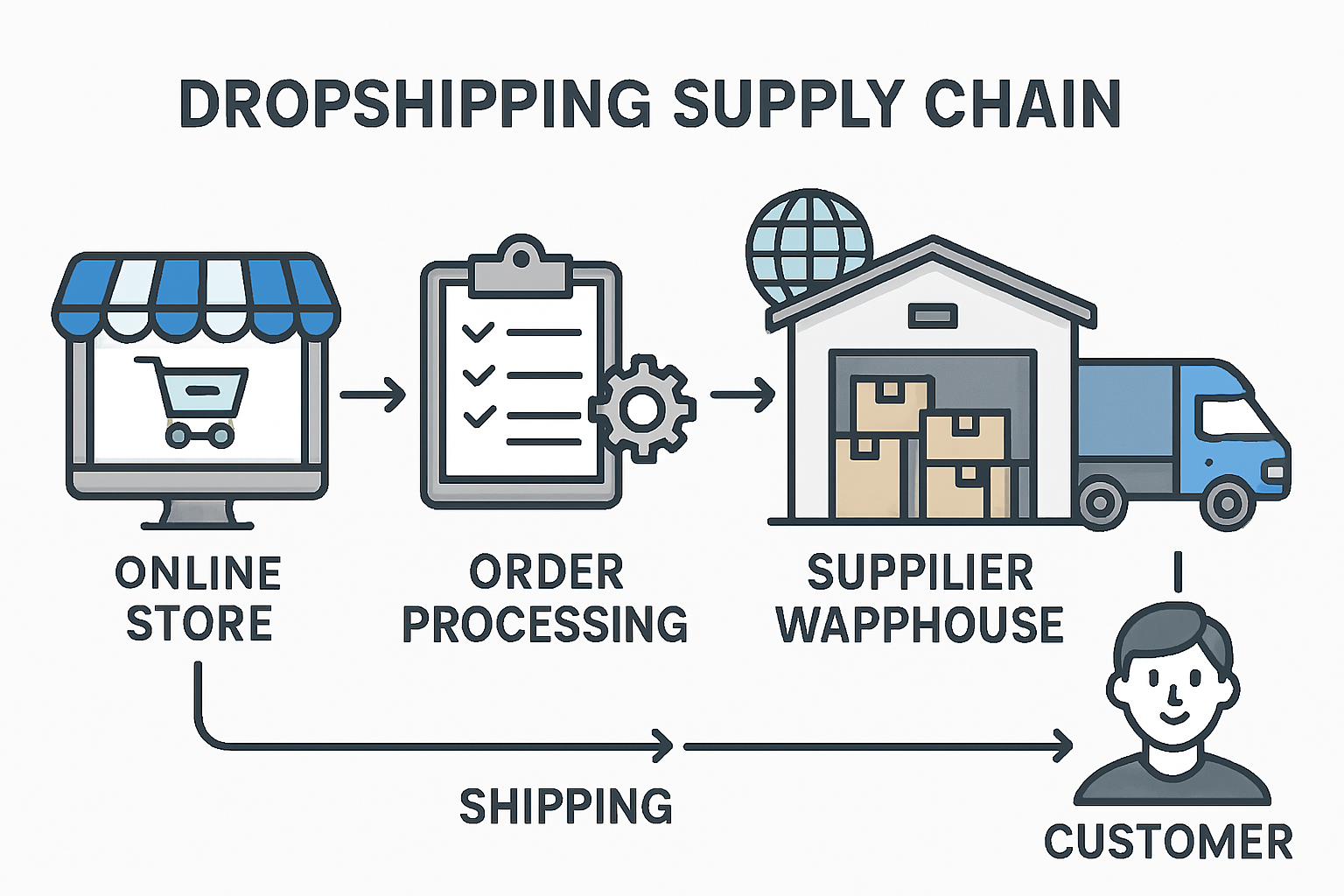
1. What is an Efficient Dropshipping Supply Chain?
An efficient dropshipping supply chain ensures reliability, cost-effectiveness, and scalability. It means accurate order processing from your Dropshipping supplier, consistent product quality, transparent virtual inventory, and timely, traceable shipping, leading to high customer satisfaction. Key components include: 1) Product sourcing and Dropshipping supplier management. 2) Order processing and integration. 3) Virtual inventory synchronization. 4) Supplier-handled warehousing and fulfillment. 5) Optimized shipping and logistics. 6) Responsive customer service and returns. Efficiency in these areas directly boosts customer loyalty, profitability, and the ability to scale. For B2B buyers, a dependable Dropshipping supplier like Runtoagent, known for mature procurement and logistics, is crucial.
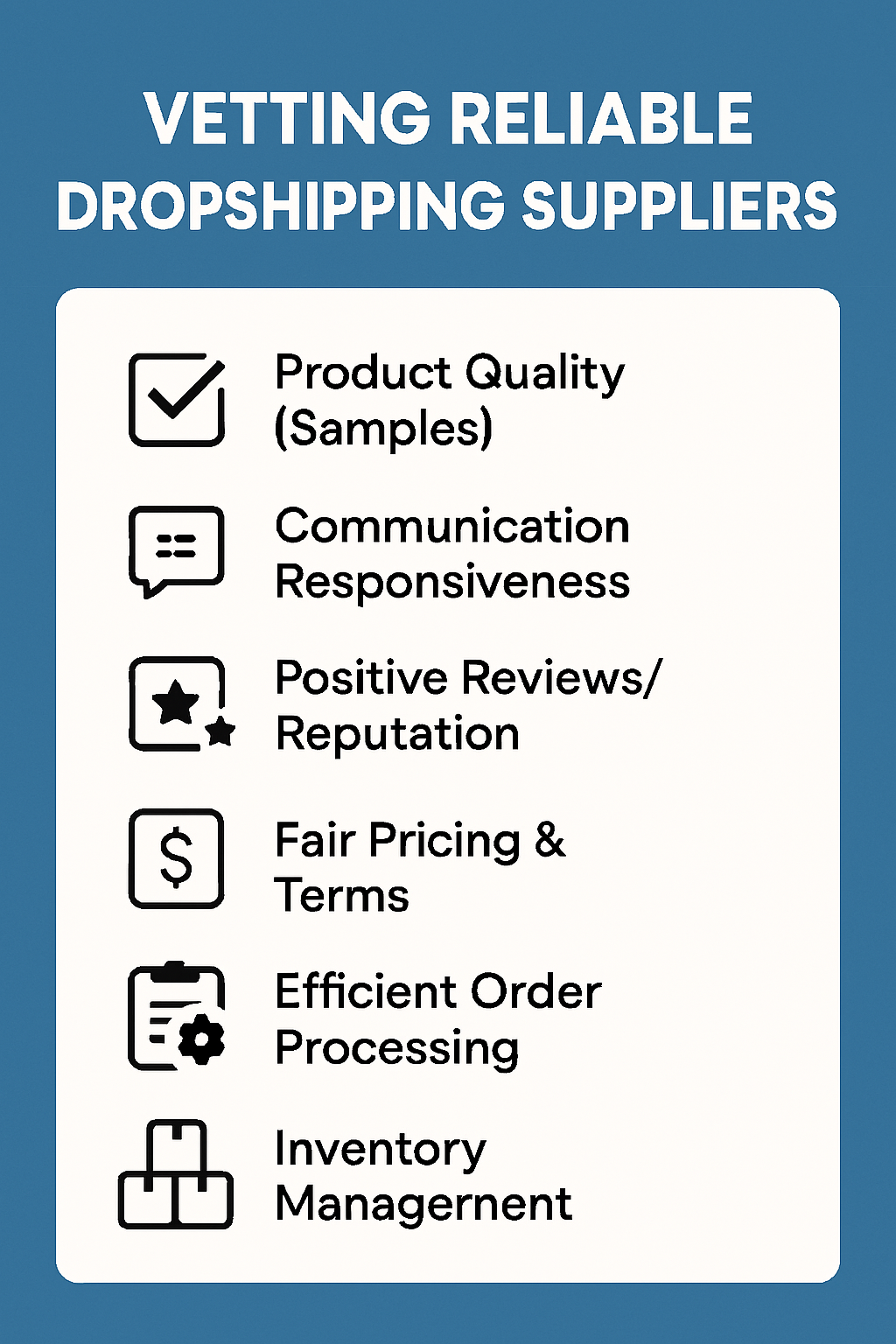
2. How Can I Identify Reliable Dropshipping Suppliers?
Identifying a reliable Dropshipping supplier is paramount. Key vetting criteria include: Product Quality & Consistency (always get samples), Production Capacity & Lead Times (can they meet demand?), Shipping & Fulfillment Capabilities (reliable methods, tracking, efficient returns), Communication & Responsiveness (a crucial indicator), and Competitive & Transparent Pricing. For businesses like Chris’s targeting US/EU markets, quality and international shipping expertise are vital. Red flags include lack of transparency (e.g., about factory status), poor communication, consistently negative reviews, demands for large upfront payments, or a non-professional online presence. Utilize B2B marketplaces like Alibaba, AliExpress, DHGate, SaleHoo, or specialized directories. Services like Runtoagent offer pre-vetted Dropshipping supplier options, especially in hubs like China, reducing risk. Effective, clear, and timely communication is non-negotiable; test this before committing. This Dropshipping supplier is your operational arm.
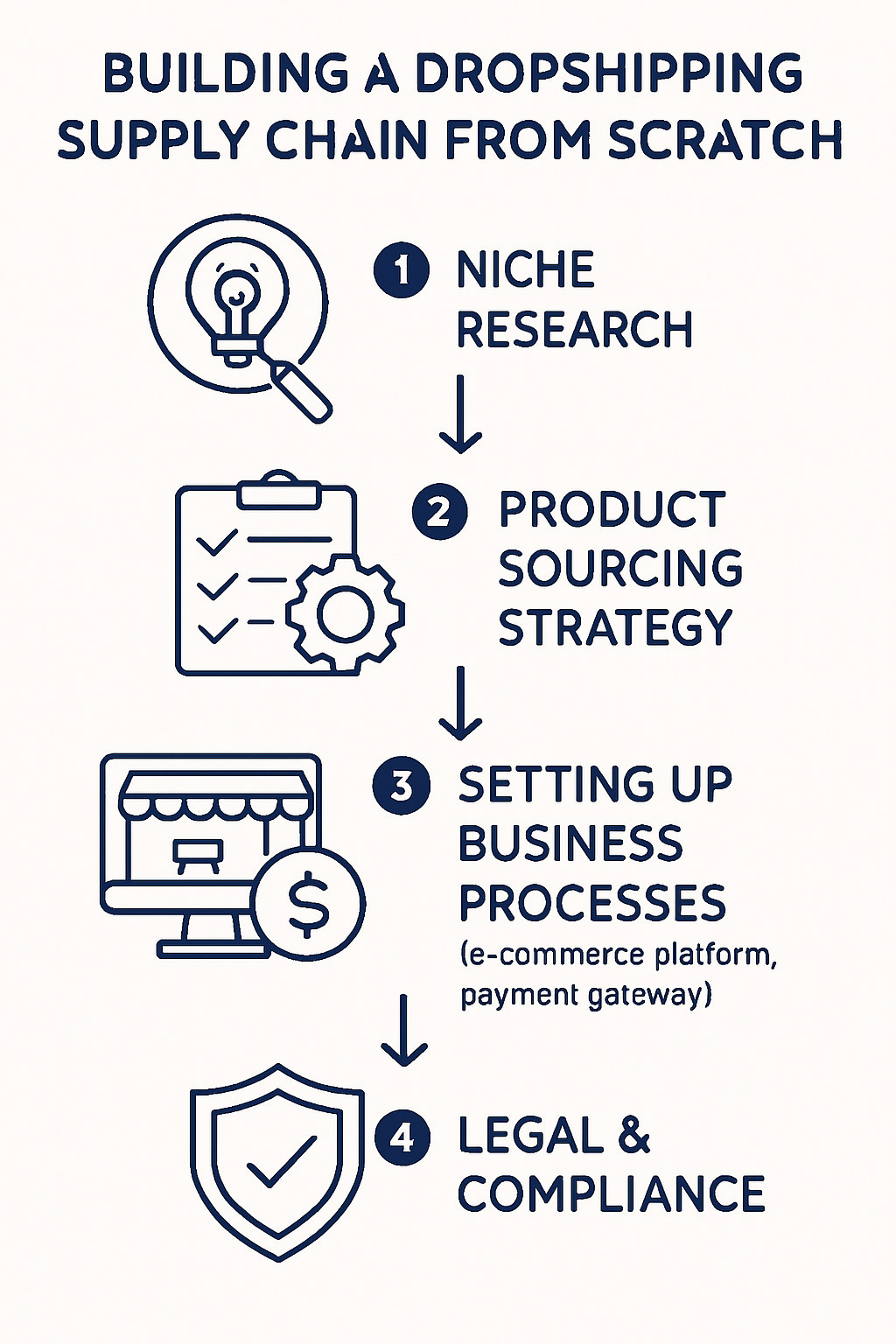
3. What Are the First Steps to Build a Supply Chain from Scratch?
Building a supply chain starts with thorough niche research and product selection based on market demand and profitability, not just passion. Understand your target customer (like Chris) and analyze trends. Next, define your product sourcing strategy: will you use manufacturers, wholesalers, or platforms? Direct relationships (perhaps via agents like Runtoagent) offer better long-term margins for B2B or scaling businesses but have higher entry barriers than platforms. Consider supplier location and your desired control over quality/branding. Then, set up foundational business processes: your e-commerce store, payment gateways, customer service protocols, and a clear order flow map (store to Dropshipping supplier to customer). Finally, address legal and compliance considerations for sourcing internationally: import regulations, product certifications (CE, FDA), labeling, customs duties, and business licenses. Clear terms with your Dropshipping supplier are essential. Experienced partners can help navigate these complexities.
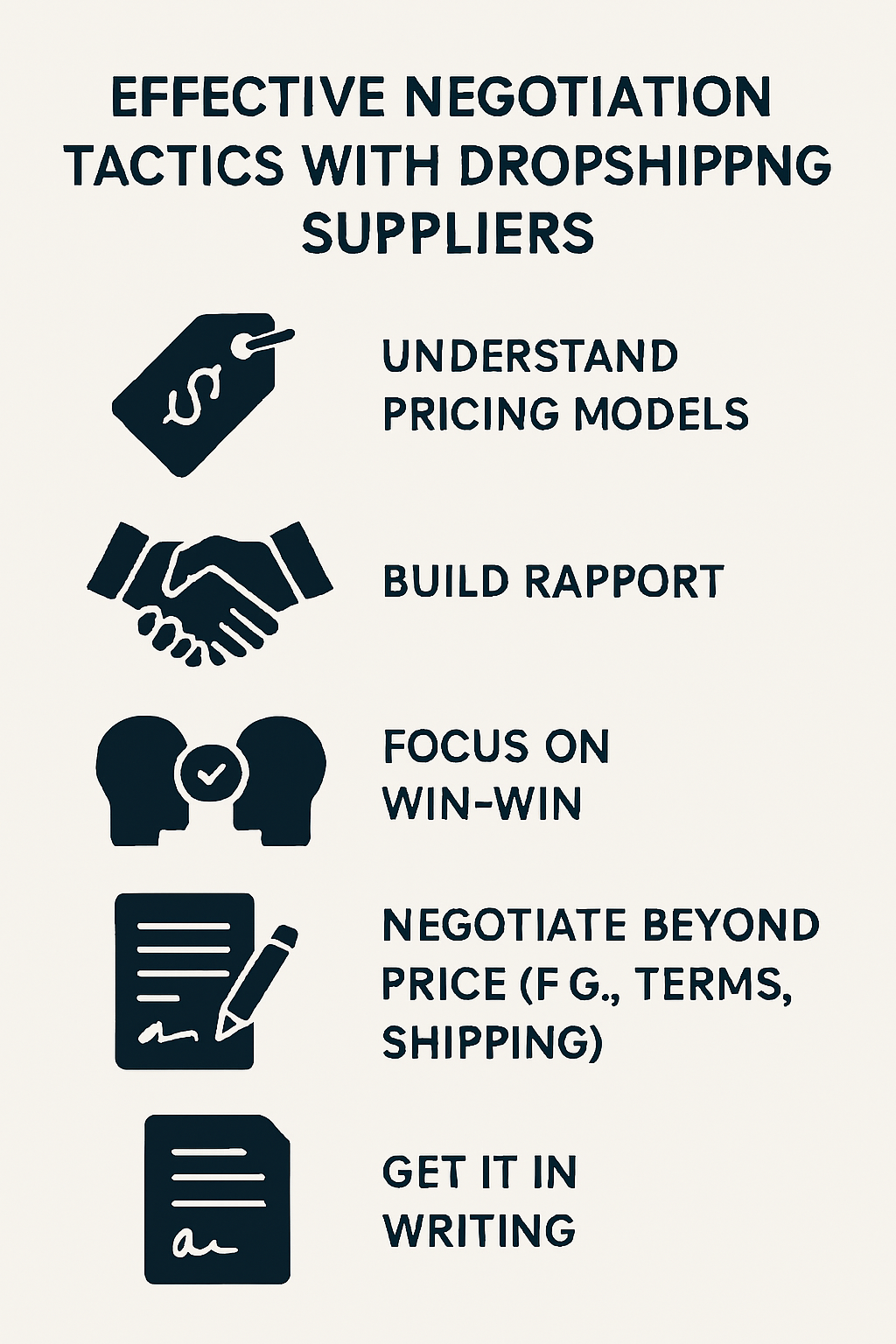
4. How Do I Negotiate with Dropshipping Suppliers Effectively?
Effective negotiation with a Dropshipping supplier aims for a mutually beneficial agreement, not just the lowest price. Understand their pricing models (tiered, component costs for product/shipping/handling) to identify negotiation points. Key tactics include: Researching market prices for leverage. Using volume as a bargaining chip (current or projected). Negotiating beyond price: payment terms, return policies, SLAs, or custom branding. Aim for long-term relationships over aggressive one-off deals; a valued partner is more flexible and cooperative. Runtoagent fosters such trust-based relationships. For MOQ (Minimum Order Quantity), if initially too high, try negotiating a lower trial MOQ, tiered MOQs, or leveraging orders across multiple products. A flexible Dropshipping supplier willing to accommodate growing businesses is invaluable.
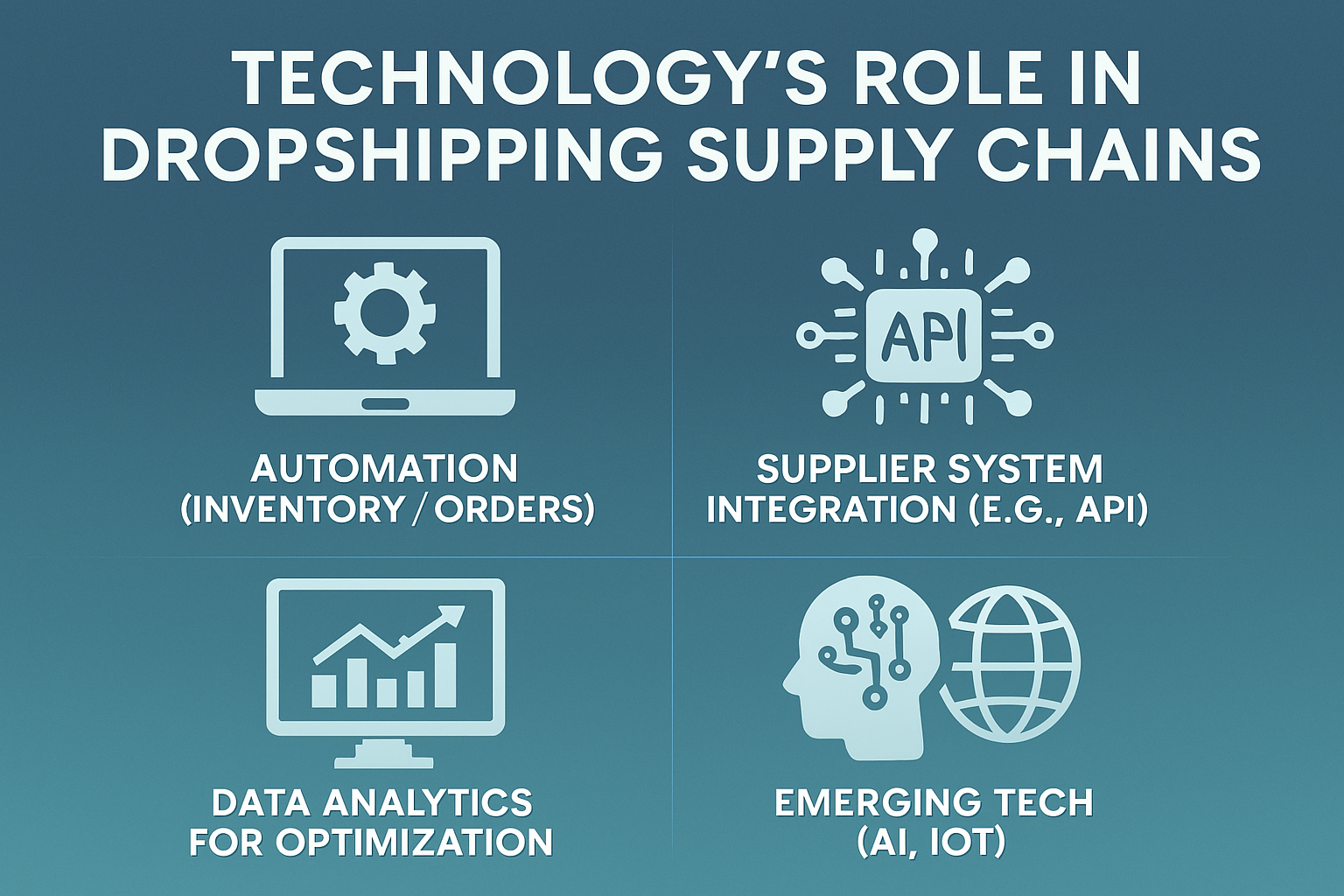
5. What Role Does Technology Play in Supply Chain Management?
Technology is the backbone of efficient dropshipping supply chain management. Essential software includes Inventory Management Systems (IMS) for real-time stock syncing with your Dropshipping supplier (preventing overselling) and Order Management Systems (OMS) for automating order flow to the supplier, reducing errors and handling tracking. API integration between your e-commerce platform and your Dropshipping supplier’s systems is critical for seamless, automated data exchange (orders, inventory, shipping). For B2B, robust integration is non-negotiable. Runtoagent can assist with these integrations. Data analytics helps optimize performance by identifying bottlenecks and inefficiencies in your supply chain (e.g., supplier delays, shipping issues) through sales trends, Dropshipping supplier performance, and customer feedback. Future trends include AI/ML for demand forecasting and inventory optimization, blockchain for transparency, and IoT for shipment tracking. A forward-thinking Dropshipping supplier will also adopt new tech.
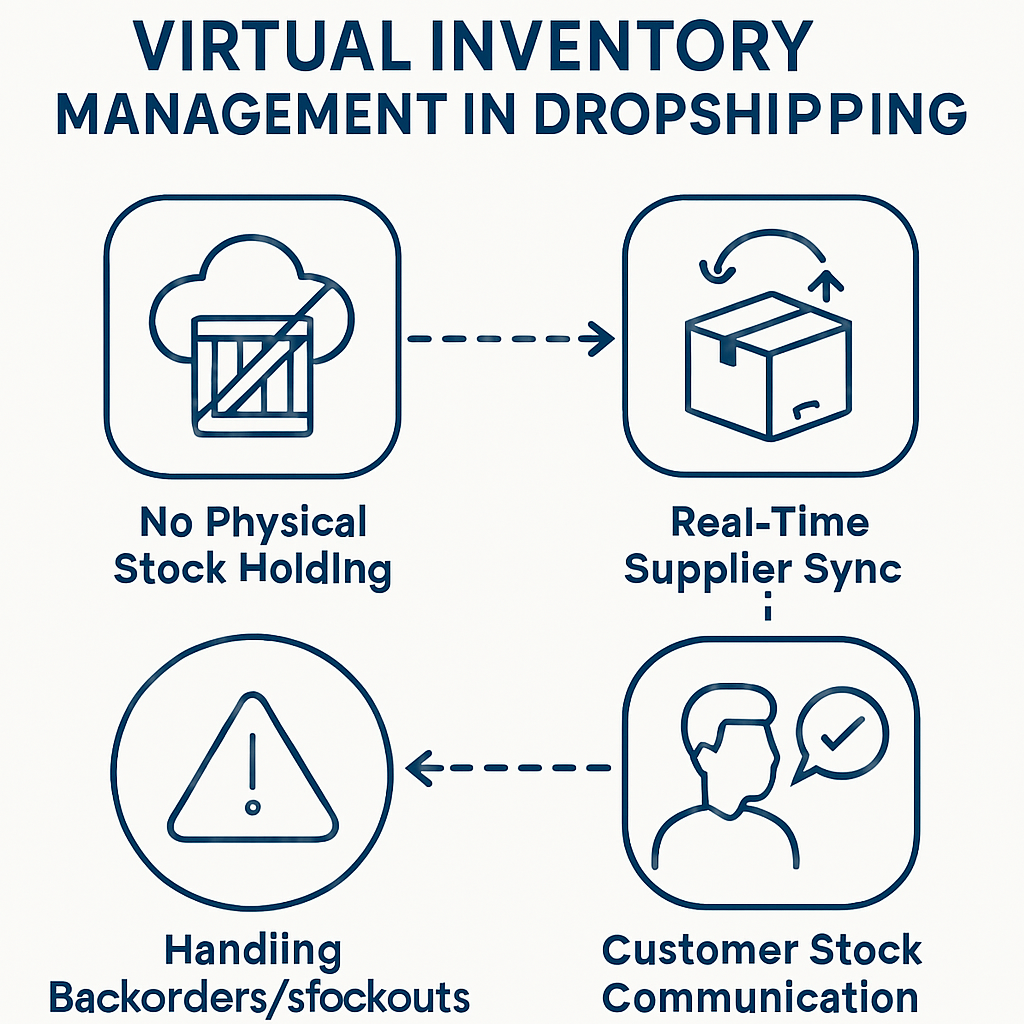
6. How Can I Manage Inventory Without Holding Stock?
Managing virtual inventory in dropshipping means relying on your Dropshipping supplier for accurate stock data. The challenge is ensuring your store reflects their availability to prevent overselling. Real-time inventory syncing via API or frequent updates (e.g., hourly CSVs) is crucial. A proactive Dropshipping supplier facilitates this. Despite best efforts, stockouts occur. Strategies for handling backorders/stockouts involve immediate customer communication, offering alternatives (wait, different product, refund), and clear store policies. For backorders, maintain regular updates. Some retailers display slightly lower stock than reported by the Dropshipping supplier as a buffer. Communicating stock levels (or scarcity) to customers (e.g., “Only 3 left!”) can create urgency but must be accurate. Offering back-in-stock notifications helps recapture sales. Transparency is key.
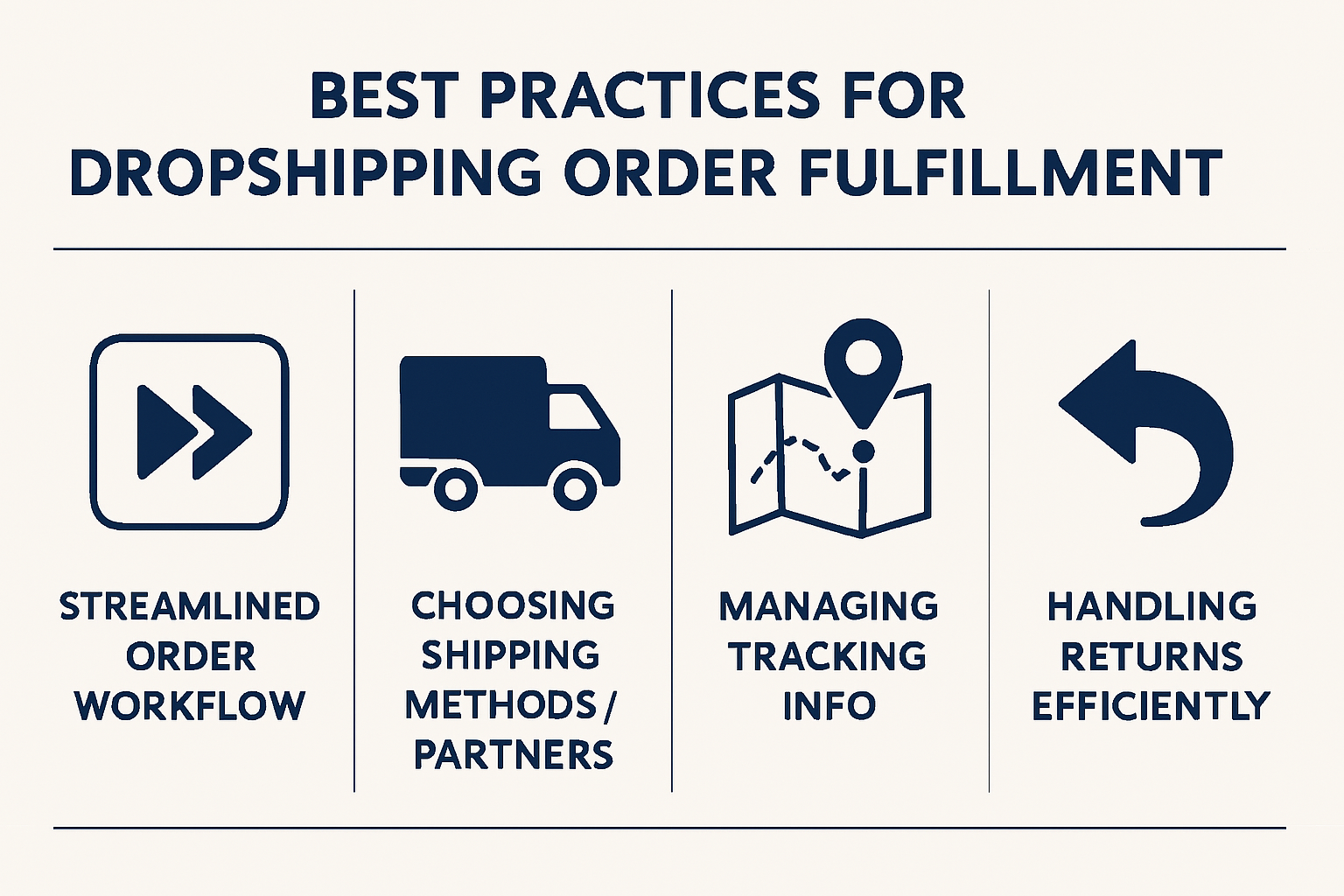
7. What Are the Best Practices for Order Fulfillment?
Efficient order fulfillment is vital. Best practices include: Streamlining the order processing workflow from your store to the Dropshipping supplier, ideally automated to reduce errors and delays. Define clear protocols for order confirmation and processing times. Choosing the right shipping methods and partners by working with a Dropshipping supplier offering multiple reliable carriers (e.g., DHL, FedEx, ePacket) and service levels, especially for international sales. Discuss packaging standards. Runtoagent’s partners offer robust multi-channel logistics. Managing tracking information and updates promptly and automatically to customers reduces
inquiries like “WISMO” (Where Is My Order?). Handling returns and exchanges efficiently by understanding your Dropshipping supplier’s return policy (conditions, costs, process) and aligning your store policy. Clear communication with customers during returns is vital.
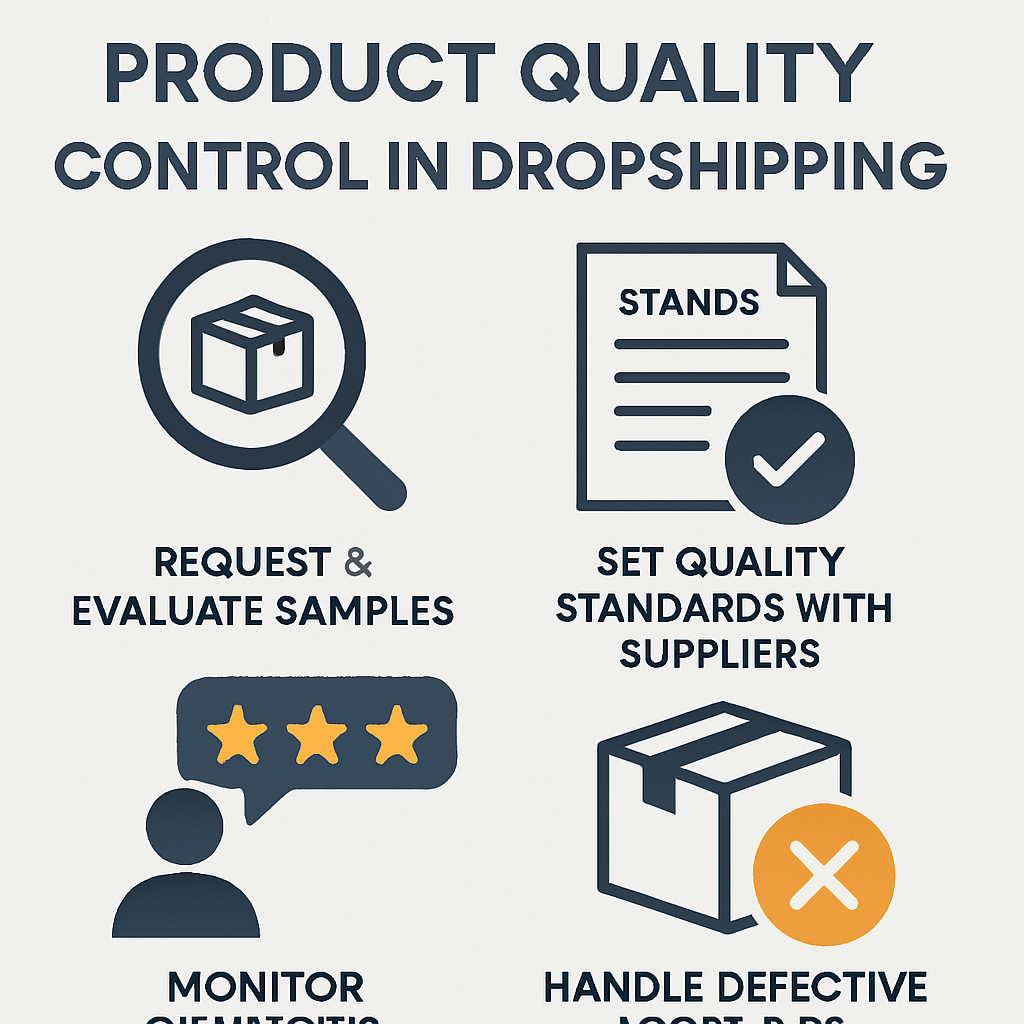
8. How Do I Maintain Product Quality Control with Dropshipping?
Maintaining product quality without physical inspection is challenging but crucial. Rigorously request and evaluate product samples from any potential Dropshipping supplier before listing items. Assess materials, workmanship, and functionality. Set clear quality standards and expectations with your supplier, documenting them in your agreement. Discuss their internal QC processes. Implement a system for gathering and analyzing customer feedback on product quality through reviews and service interactions to identify recurring issues. Finally, have a clear, agreed-upon process with your Dropshipping supplier for dealing with defective products or quality issues (refund, replacement, return shipping). Prompt and fair resolution is key. If a Dropshipping supplier consistently fails on quality, be prepared to terminate the relationship. Runtoagent emphasizes strict quality control with its factory partners.
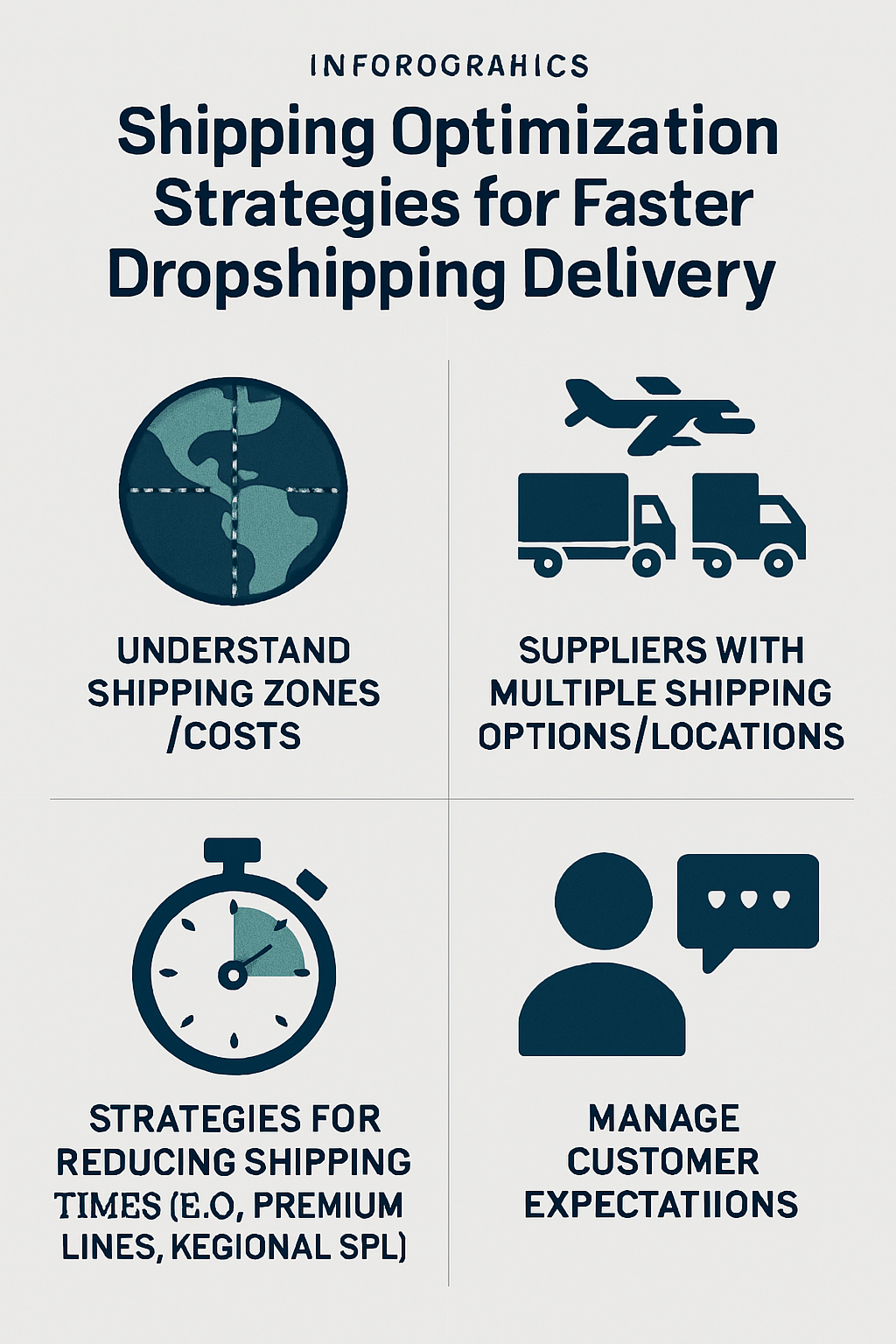
9. How Can I Optimize Shipping and Logistics for Faster Delivery?
Optimize shipping for customer satisfaction. Understand shipping zones and costs from your Dropshipping supplier to your key customer regions. Offer transparent shipping fees and various options (standard, expedited) if possible. Work with a Dropshipping supplier offering multiple shipping options and reputable carriers (DHL, FedEx, ePacket). For international sales, like Chris’s, suppliers experienced in cross-border logistics are vital. Strategies for reducing shipping times include using regional/domestic suppliers or a Dropshipping supplier with strategically located warehouses (e.g., in US, EU, AU via services like Runtoagent). This can justify slightly higher product costs. Always manage customer expectations for delivery with realistic (even slightly overestimated) timeframes and prompt tracking information. Proactive communication about delays is crucial.
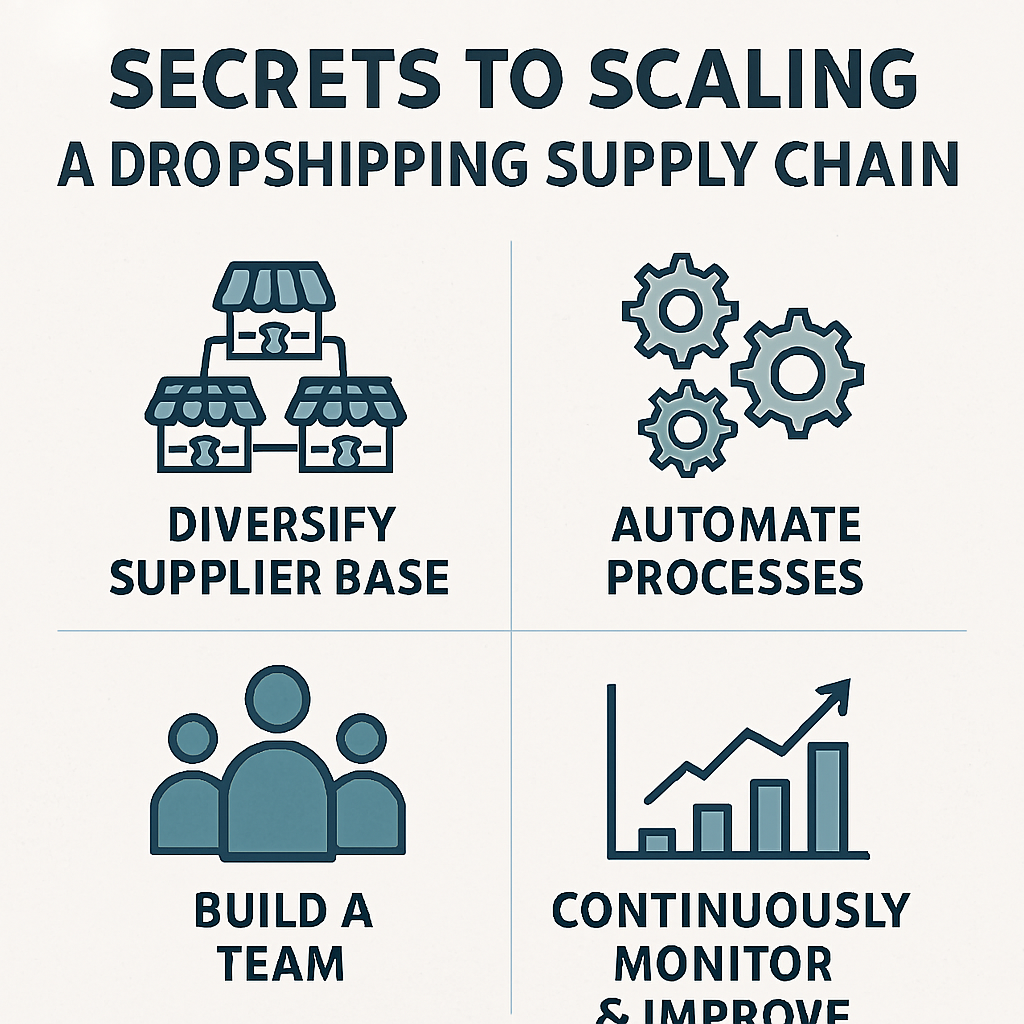
10. What Are the Secrets to Scaling a Dropshipping Supply Chain?
Scaling requires strategic adjustments. Diversify your Dropshipping supplier base to mitigate risks (price hikes, stockouts, supplier failure) and increase negotiating leverage. Have backup suppliers vetted. Aggressively automate processes (order entry, inventory updates, tracking) as volume grows using IMS, OMS, and API integrations with your Dropshipping supplier network. Build a team (internal or outsourced, like VAs or sourcing agents like Runtoagent) to manage supply chain operations, supplier relationships, and strategic tasks that automation can’t handle. Finally, continuously monitor KPIs and improve efficiency. Track order processing time, shipping accuracy, defect rates, and cost per order. Regularly review Dropshipping supplier performance and be ready to adapt, renegotiate, or switch suppliers to support growth without compromising quality.
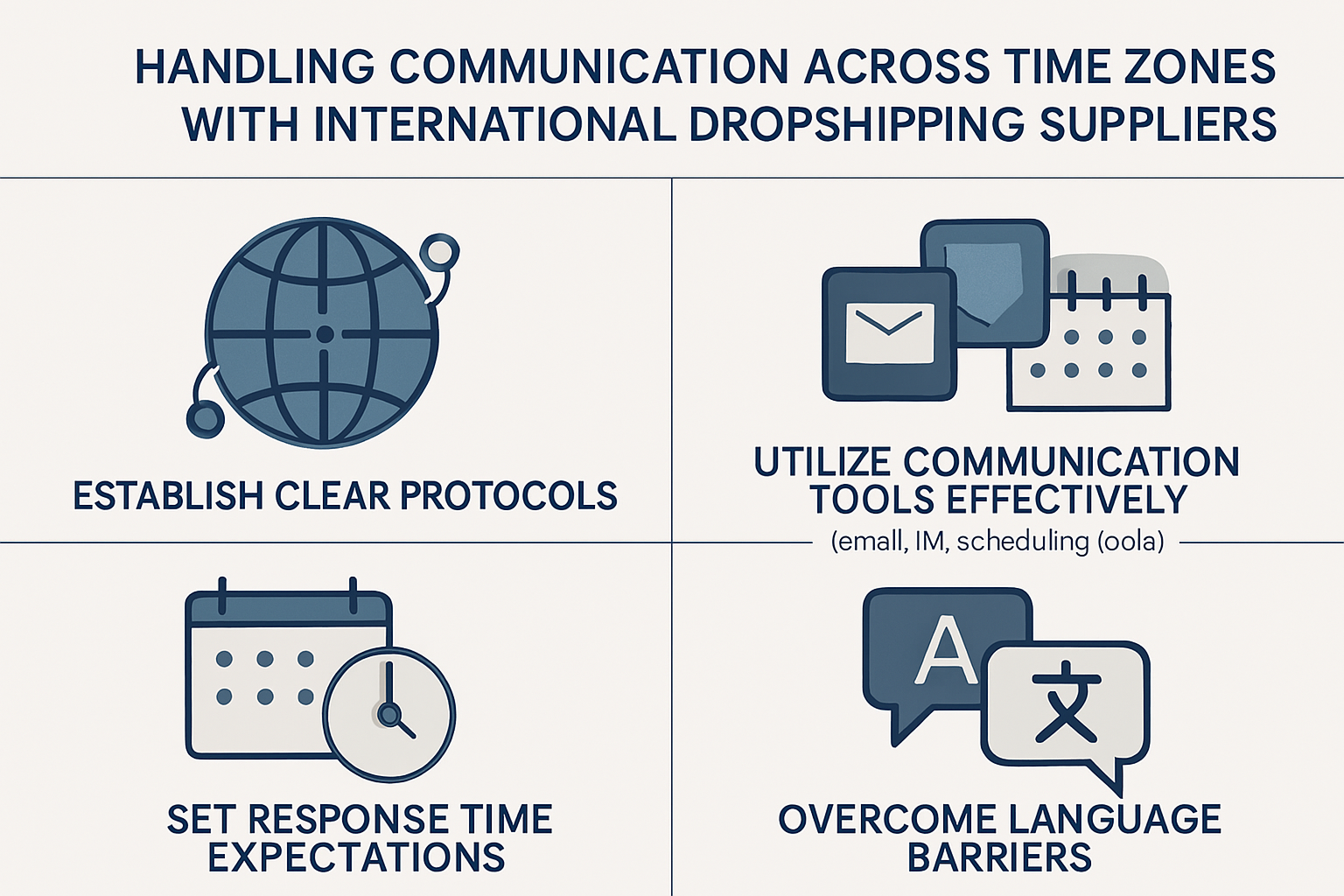
11. How Do I Handle Communication Across Different Time Zones with Suppliers?
Effective cross-time-zone communication with an international Dropshipping supplier requires clear protocols: agreed channels (email, messaging apps like WeChat), expected response times (acknowledging time differences), and definitions of urgency. Utilize communication tools effectively: schedule calls for complex talks during overlapping hours, use asynchronous methods for routine matters, employ shared documents, and ensure your Dropshipping supplier is proficient with chosen tools. Set realistic expectations for response times for both parties. For urgent issues, have an escalation plan. Overcome language barriers by using clear, concise language, avoiding slang, using visuals, and carefully employing translation tools. A Dropshipping supplier committed to clear communication is a good partner. Services like Runtoagent can offer local communication support.
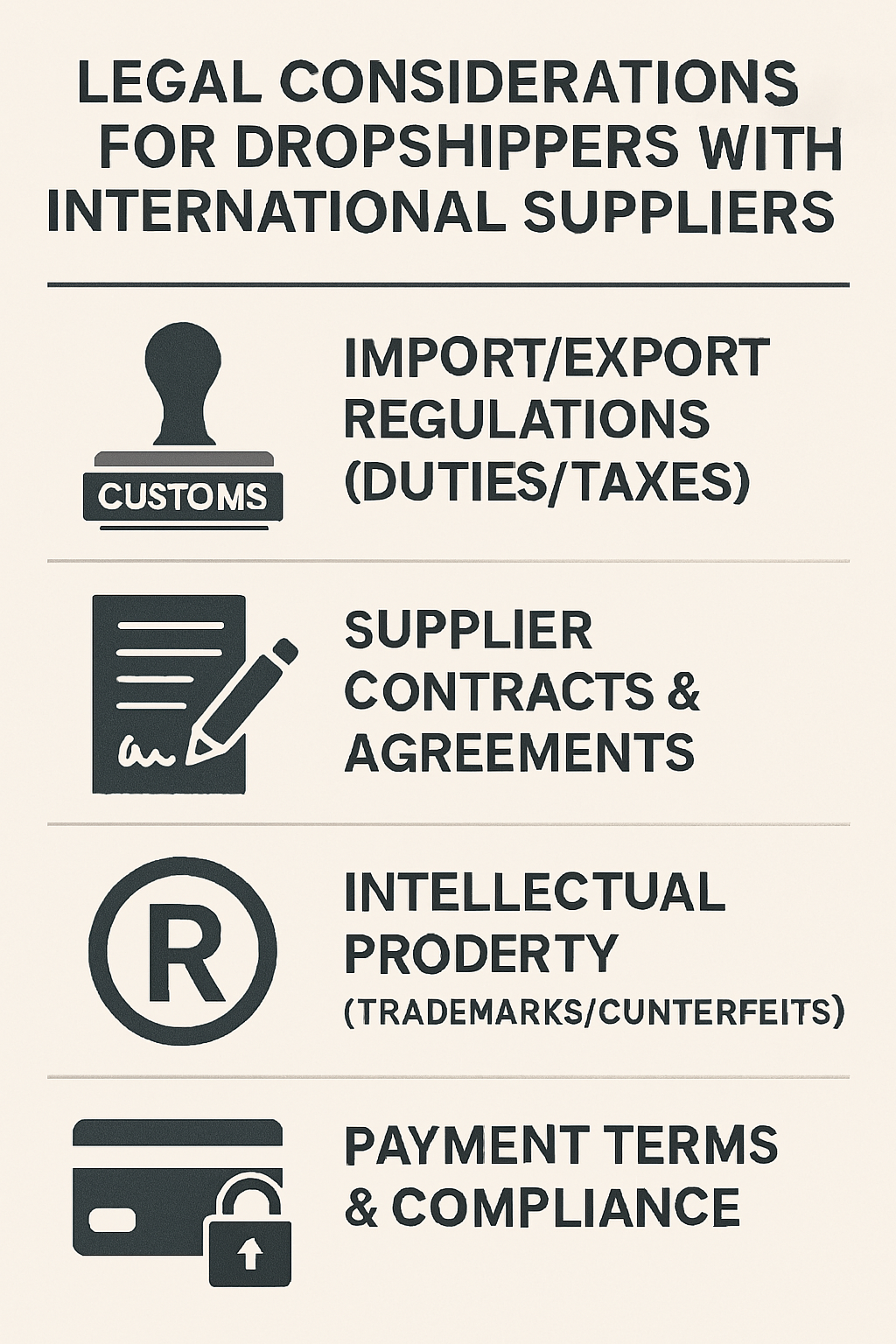
12. What Legal Aspects Should I Consider with International Suppliers?
Navigating legalities with an international Dropshipping supplier is vital. Understand import/export regulations for your products in target markets (prohibited items, certifications like CE/FDA, duties, taxes). You (or your customer) are often the importer of record. Formal contracts and agreements are highly recommended, outlining terms like quality standards, pricing, SLAs, IP rights, and termination clauses. Consult legal professionals for international trade. Address Intellectual Property (IP) considerations: ensure products from your Dropshipping supplier don’t infringe patents, trademarks, or copyrights. Selling counterfeits has severe penalties. Protect your own IP if private labeling. Be meticulous about payment terms and international transactions: currency, risk of fluctuation, secure payment methods (PayPal, credit cards, bank transfers, trade assurance), and accurate record-keeping. A professional Dropshipping supplier like Runtoagent will have clear processes for these aspects.
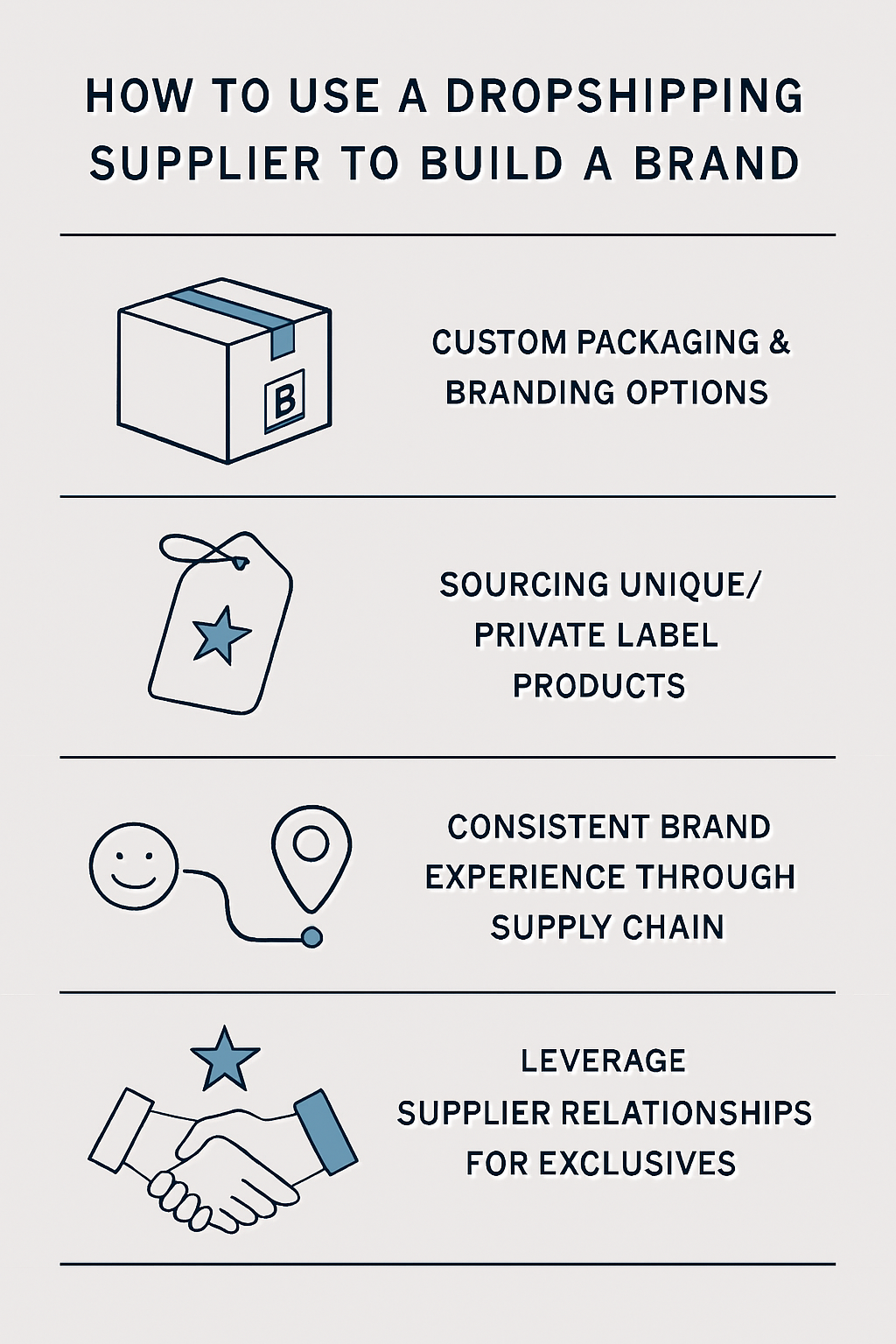
13. How Can I Use a Dropshipping Supplier to Build My Brand?
Branding is possible in dropshipping. Explore custom packaging and branding options with your Dropshipping supplier (custom labels, inserts, boxes). This enhances brand perception, though it may have costs/MOQs. Source unique or private label products through your Dropshipping supplier to differentiate from competitors selling generic items. Private labeling (your brand on products, possibly modified) builds a defensible brand and allows better margins. Maintain a consistent brand experience through accurate product descriptions, quality alignment (your Dropshipping supplier’s products must match your brand promise), and customer service that upholds your standards. Leverage Dropshipping supplier relationships for exclusive deals or early access to new products, positioning your brand as a trendsetter. A good Dropshipping supplier may collaborate on promotions.
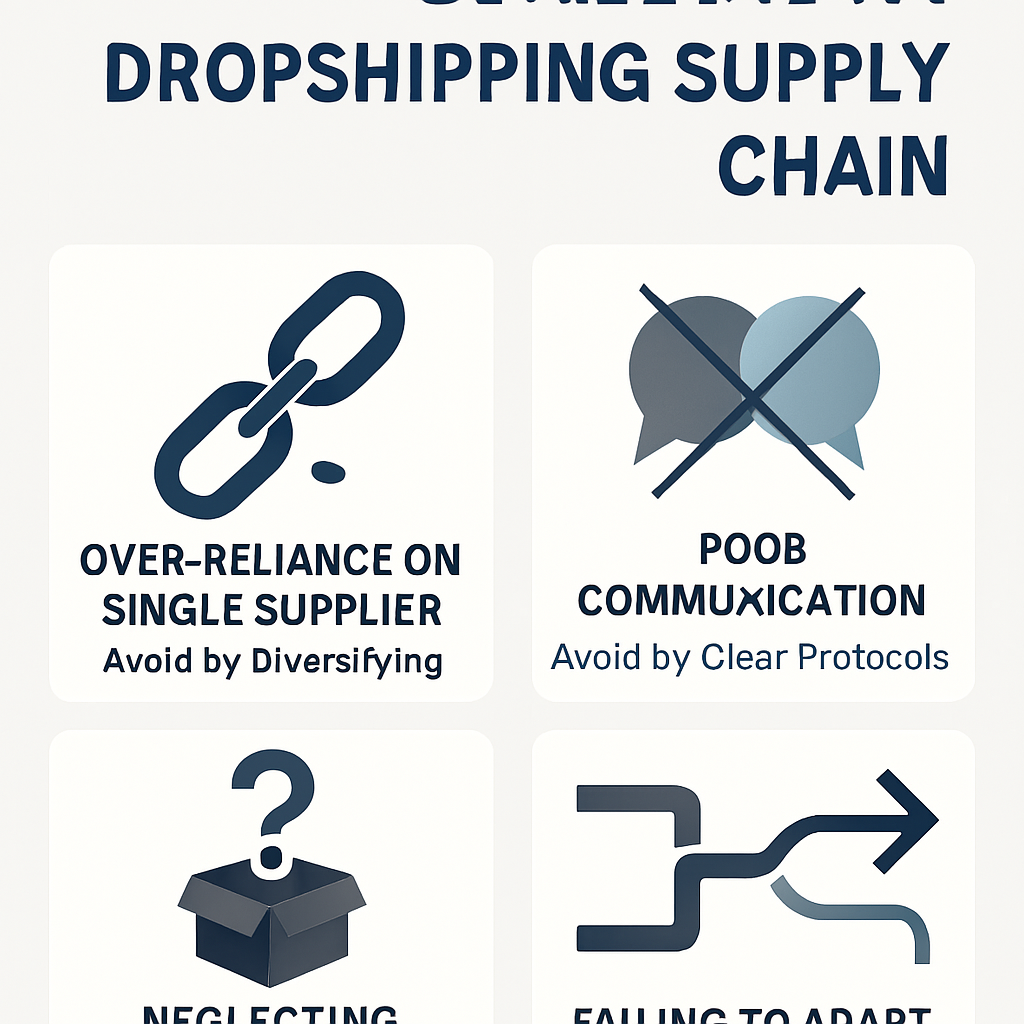
14. What Are Common Pitfalls in Building a Dropshipping Supply Chain and How to Avoid Them?
Avoid common traps: Over-reliance on a single Dropshipping supplier creates vulnerability. To avoid: Continuously scout and vet alternative suppliers; diversify sourcing as you mature. Runtoagent’s multi-factory network aligns with this. Poor communication and misunderstandings lead to errors. To avoid: Establish clear protocols, use precise language, confirm understanding, and be patient with international partners. Neglecting quality control damages your brand. To avoid: Rigorous sample testing, clear quality standards with your Dropshipping supplier, and active monitoring of customer feedback. Address issues decisively. Failing to adapt to market changes makes your supply chain obsolete. To avoid: Foster continuous improvement, review supplier performance, monitor trends, and be willing to evolve your strategy and Dropshipping supplier relationships.
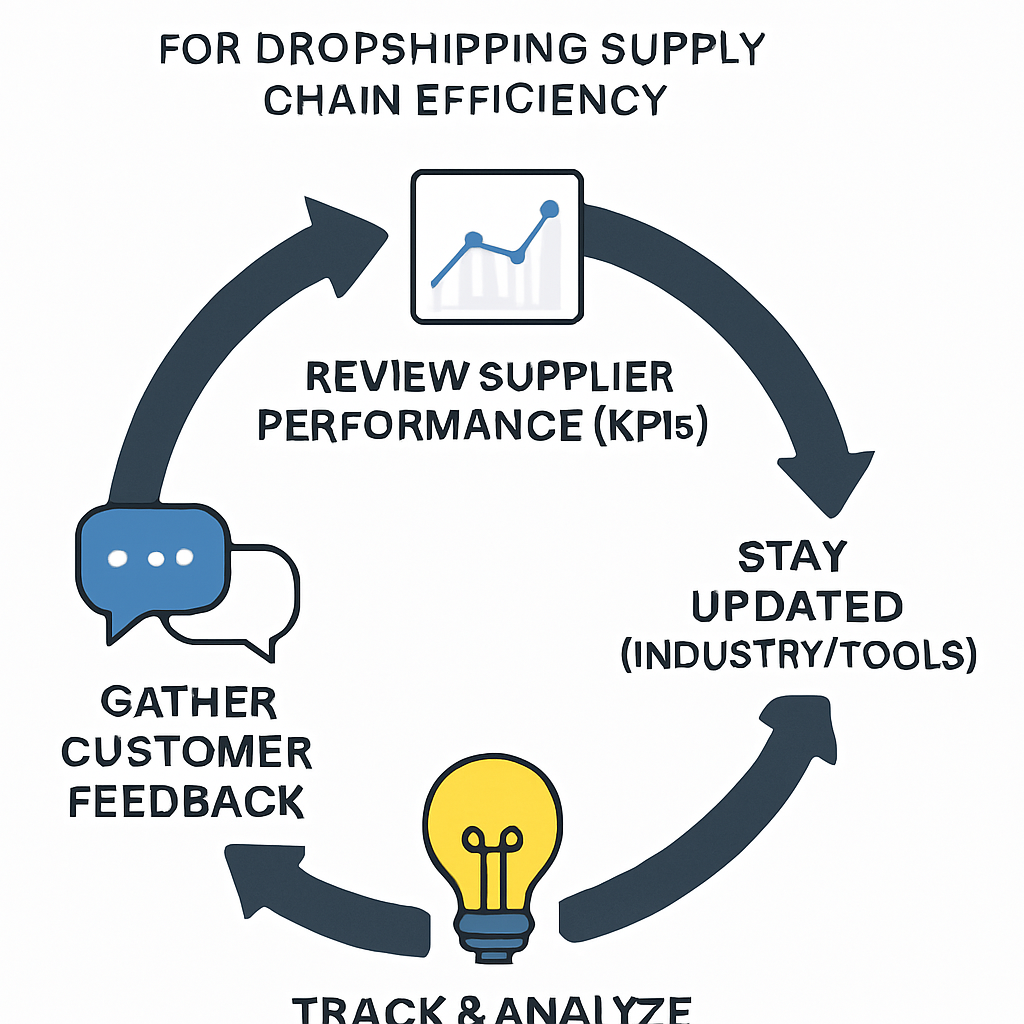
15. How Can I Continuously Improve My Dropshipping Supply Chain Efficiency?
Embed continuous improvement: Regularly review Dropshipping supplier performance against KPIs (order processing time, shipping accuracy, defect rates, responsiveness). Address declines, appreciate good performance. Gather and analyze customer feedback on products and fulfillment. Use insights for constructive talks with your Dropshipping supplier or process adjustments. Stay updated on industry best practices and tools through blogs, webinars, and communities. Be open to innovations that streamline operations or enhance customer experience. Exploring partnerships with services like Runtoagent can provide access to curated knowledge. Set Key Performance Indicators (KPIs) and track progress meticulously (Order Defect Rate, On-Time Shipping, Average Shipping Time, CSAT). Use this data to drive objective improvements, ensuring your Dropshipping supplier network and operations remain efficient and profitable.
Conclusion: Your Blueprint for Supply Chain Mastery
Building an efficient dropshipping supply chain is complex but pivotal for e-commerce success. We’ve covered identifying reliable dropshipping suppliers, foundational setups, negotiation, technology, inventory, fulfillment, quality control, international communication, legalities, branding, avoiding pitfalls, and continuous improvement. The secret is not one trick but a combination of these strategies, often aided by expert partners like Runtoagent, who can connect you with the ideal Dropshipping supplier. This journey requires ongoing commitment to adaptation and refinement. Your supply chain is a core brand component. By applying these insights, you architect a resilient, scalable backend. For those ready to optimize, Runtoagent offers expertise to turn supply chain challenges into competitive advantages, helping you find the perfect Dropshipping supplier and streamline processes. The blueprint is here; build and refine.
FAQ
Q1: What is a dropshipping supplier? A1: A dropshipping supplier is a third-party (manufacturer, wholesaler, or distributor) that holds inventory and ships products directly to your customers on your behalf. This allows you, the retailer, to operate without managing physical stock.
Q2: How does a dropshipping business model work with a dropshipping supplier? A2: A customer orders from your online store. You forward the order and customer details to your dropshipping supplier. The supplier then packages and ships the product directly to the customer, often under your brand if arranged. You profit from the margin between your selling price and the supplier’s cost.
Q3: Is it better to have multiple dropshipping suppliers or just one for an efficient supply chain? A3: While starting with one reliable dropshipping supplier is simpler, diversifying to multiple vetted suppliers is generally better for long-term resilience and efficiency. It mitigates risks (stockouts, price hikes), offers wider product selection, and can improve shipping/pricing options. Manage complexity as you grow.
Q4: How do I pay my dropshipping suppliers, and what are common terms? A4: Payment methods vary: PayPal, credit cards, bank transfers, or platform systems (AliExpress). Typically, you pay the dropshipping supplier for the product and shipping after receiving a customer order but before shipment. Established relationships might allow net terms, but this is rare for new businesses.
Q5: Can I use dropshipping suppliers from China if I sell globally, and how does Runtoagent help with this? A5: Yes, many use Chinese dropshipping suppliers for competitive pricing and selection. However, vet them carefully for quality, reliability, and communication, and be transparent about shipping times. Runtoagent helps by finding/vetting reliable Chinese dropshipping suppliers, aiding communication, assisting with quality control, and streamlining sourcing/fulfillment, making international partnerships more manageable.

